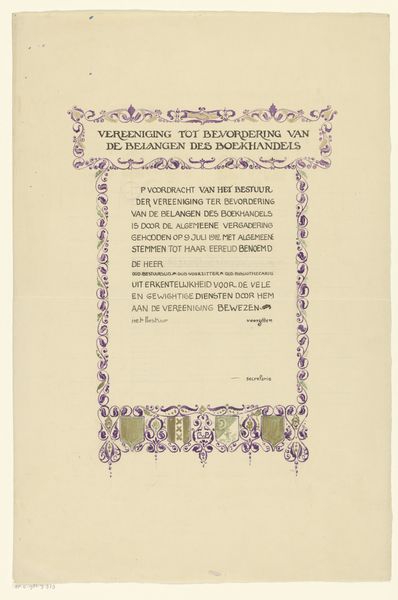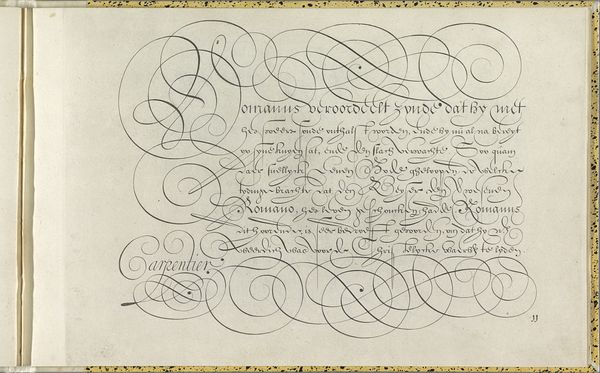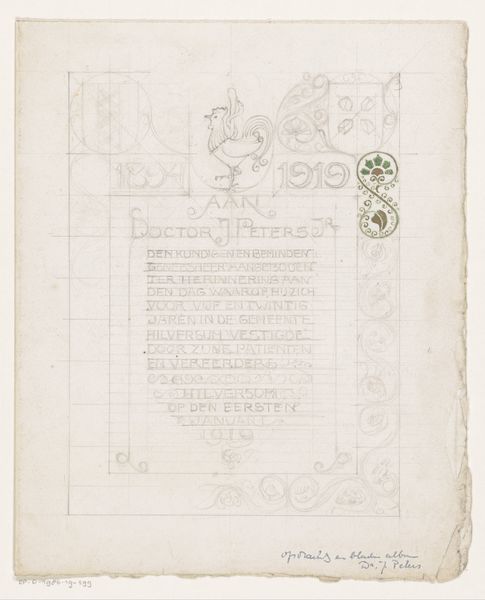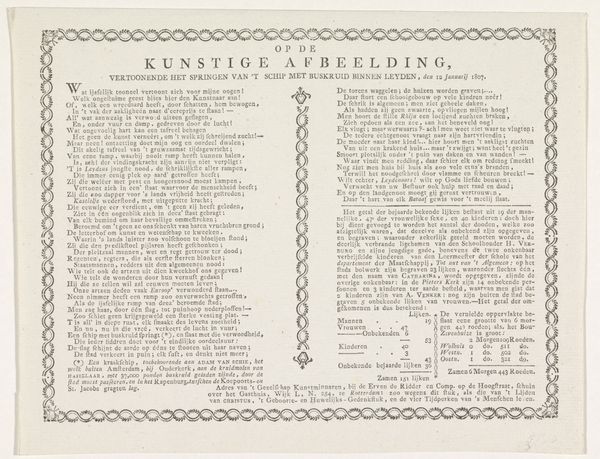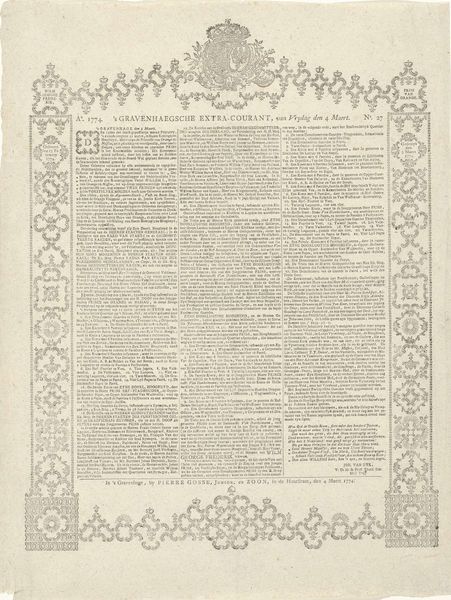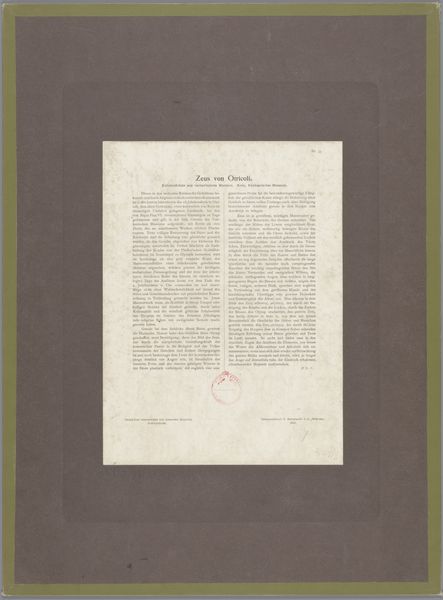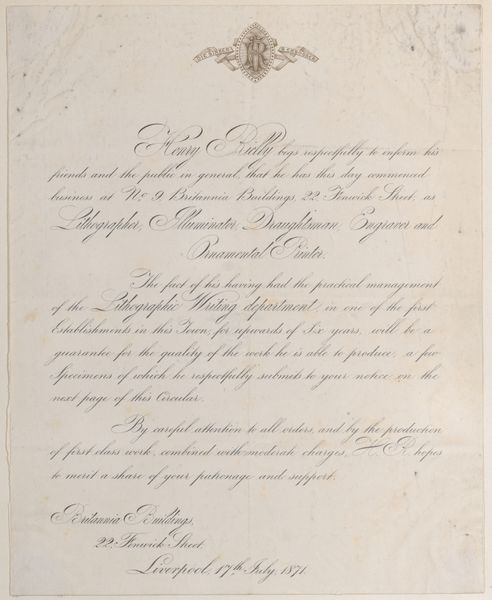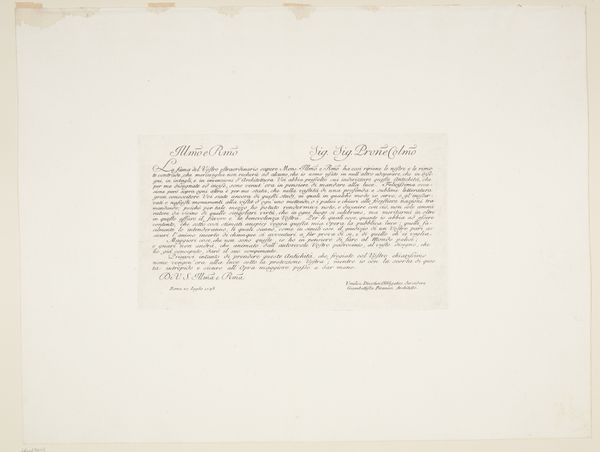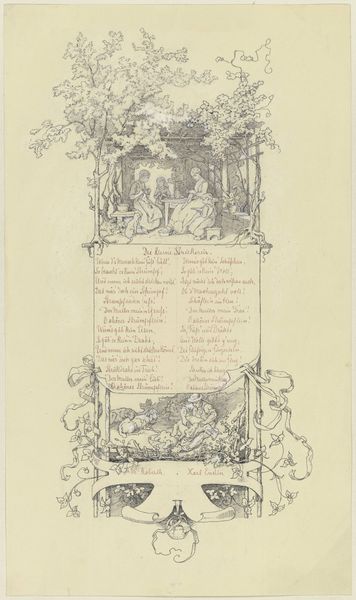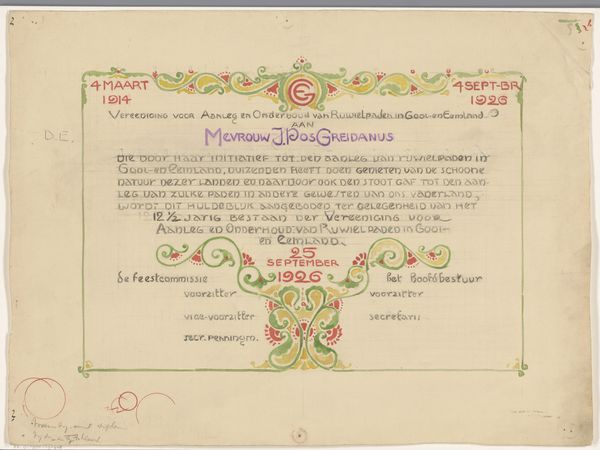
Figürlicher Schmuckrahmen zum Dürer-Fest 1828 in Frankfurt am Main c. 1828 - 1830
0:00
0:00
drawing, ornament, print, engraving
#
drawing
#
ornament
#
16_19th-century
# print
#
text
#
pattern background
#
german
#
history-painting
#
engraving
Copyright: Public Domain
Curator: This ornate print, made circa 1828 to 1830, is titled "Figürlicher Schmuckrahmen zum Dürer-Fest 1828 in Frankfurt am Main," or "Figurative Ornamental Frame for the Dürer Festival 1828 in Frankfurt am Main". Johann David Passavant designed this commemorative engraving, now held at the Städel Museum. Editor: What strikes me first is its layered quality; the meticulous text nestled within that vibrantly ornamented border evokes a sense of contained festivity. The symbols draw the eye to this being specifically Dürer related. Curator: The festival itself was a large affair, marking the 300th anniversary of Dürer's death and was used as a celebration of national art and cultural history. As an artist, Passavant understood the public role of such imagery in forging cultural identity. Look at how carefully the whole project mimics the design principles that made Dürer so popular to begin with. Editor: The iconography here is deliberate. We see allegorical figures, putti, and floral motifs. The constant circling back to Christian symbology evokes both celebration, but also memorial; with biblical flourishes speaking to artistic history as well as offering commentary of that period's cultural norms. Curator: The bordering pattern itself suggests a cyclical view of history, perhaps intentionally framing Dürer as a cultural cornerstone. You see these public festivals helped cement the artistic canon by elevating figures like Dürer, while shaping broader tastes. Editor: The text feels integral rather than secondary; the elaborate lettering feels designed to reinforce an association with history while guiding the eye around various symbolically placed figures, blending meaning and aesthetics. The overall effect is a controlled reverence. Curator: Precisely! This piece really shows the active role art plays in crafting and controlling historical memory in civic life. Editor: This piece gives me a new way to consider how visual vocabulary serves those civic ends. It will certainly make me look at historical documents and engravings more closely from now on!
Comments
No comments
Be the first to comment and join the conversation on the ultimate creative platform.
